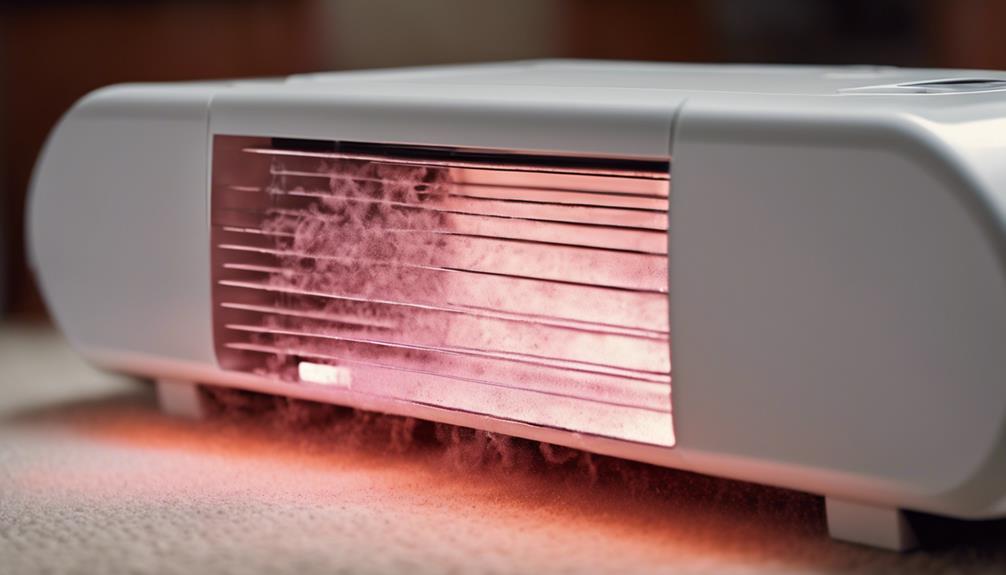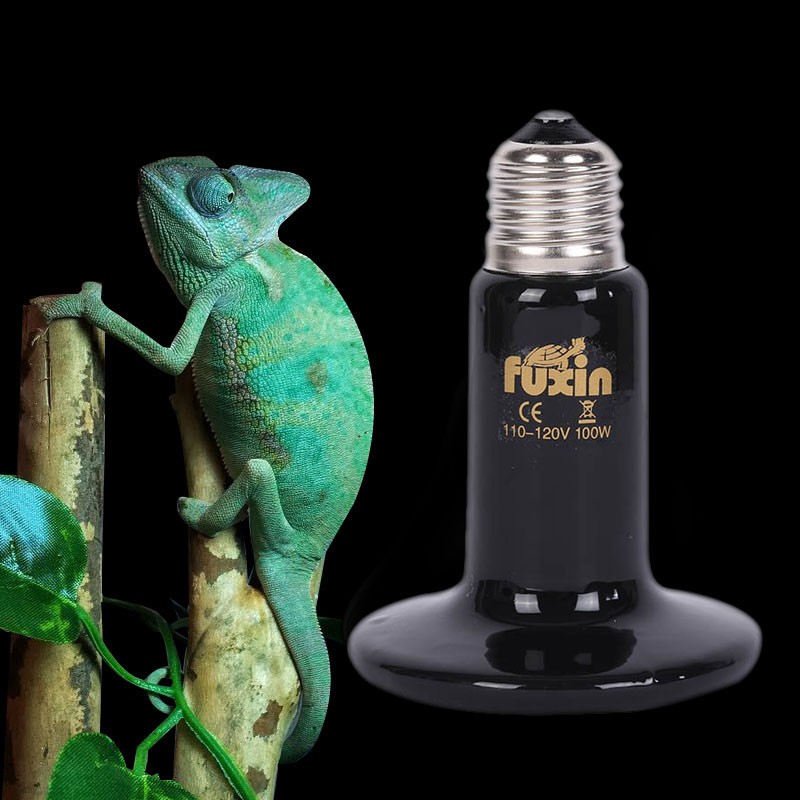
Maximize your savings with 7 key tips for using an infrared heater efficiently. Start by placing the heater strategically—keep furniture away from vents, position it centrally, and avoid blocking airflow. Set your thermostat between 68-72°F for savings, adjusting when not at home. Use the timer function to operate it only as needed, aligning with off-peak rates. Confirm proper insulation and regular cleaning for peak performance. Combine the infrared heater smartly with central heating for balanced warmth. Finally, invest in an energy-efficient model for long-term cost savings. Master these tips for peak heating efficiency.
Proper Placement for Efficient Heating

To maximize heating efficiency, position your furniture away from vents and radiators to allow for proper air circulation. This simple adjustment guarantees that warm air can flow freely throughout the room, preventing any pockets of cold air from forming.
Additionally, consider the concept of room zoning to optimize your heater's performance. By closing doors to unused rooms, you can concentrate the heat in the areas where you spend the most time, reducing the overall workload on your heating system.
Strategic heater positioning is essential for even distribution of warmth. Place your heater in a central location within your home to help circulate heat efficiently. Avoid placing large furniture pieces directly in front of the heater, as they can block the airflow and hinder the heat distribution.
Optimal Temperature Settings for Savings
For cost-effective heating, adjust your thermostat to maintain an ideal temperature setting that balances comfort and energy efficiency. Setting your thermostat too high can lead to unnecessary energy consumption and increased costs. Aim for a temperature between 68-72 degrees Fahrenheit when you're at home and lower it when you're asleep or away to save on heating bills.
By keeping a consistent temperature rather than frequently adjusting it, you can avoid temperature fluctuations that lead to increased energy usage.
Programmable thermostats can help you set specific temperatures for different times of the day, ensuring efficient heating without the need for manual adjustments.
Experts recommend lowering your thermostat by 7-10 degrees Fahrenheit for 8 hours a day to save up to 10% on your heating bills annually.
Monitoring your thermostat settings and being mindful of your home's insulation levels can further enhance your cost savings while keeping you comfortable during the colder months.
Utilize Timer Function for Cost-Effective Heating

Consider utilizing the timer function on your thermostat to optimize your heating efficiency and save on energy costs. By setting specific timer settings, you can guarantee that your heater operates only when needed, reducing energy wastage.
Energy monitoring tools can help you identify the most cost-effective times to run your heater, aligning with off-peak electricity rates. Programming your heater to turn on before you wake up or return home can provide a warm environment when needed without running constantly. For example, setting the timer to start heating 30 minutes before you wake up can save energy compared to keeping the heater running all night.
Additionally, utilizing the timer function allows you to tailor your heating schedule to your lifestyle, assuring comfort while being energy-efficient. By monitoring and adjusting your timer settings based on usage patterns, you can effectively manage your heating costs and reduce energy consumption.
Maintain Proper Insulation for Maximum Efficiency
Ensuring your home's insulation is properly maintained is vital for maximizing heating efficiency and reducing energy waste. Upgrading to high-quality insulation materials can greatly reduce heat loss through walls, ceilings, and floors, leading to lower heating costs. Proper insulation not only keeps the heat inside your home during winter but also helps maintain a cool interior during summer, making it a year-round energy-saving investment.
Draft sealing is another important aspect of maintaining efficient insulation. Sealing gaps and cracks around windows, doors, and other openings prevents cold air from entering and warm air from escaping, creating a more airtight environment. This simple step can lead to considerable savings on your heating bills by reducing the workload on your infrared heater.
Regularly inspecting and replacing worn-out insulation materials, as well as promptly addressing any draft issues, can have a noteworthy impact on your home's energy efficiency. By focusing on proper insulation maintenance, you can enhance the performance of your heating system and enjoy a more comfortable living space while saving money on heating bills.
Regular Cleaning for Enhanced Performance

Regularly cleaning your heating system and components is essential to guarantee peak performance and efficiency. Dust, pet hair, and other debris can accumulate on the heater's surface and within its components, leading to reduced effectiveness and higher energy consumption.
To maintain your infrared heater, it's recommended to clean the exterior surface weekly with a microfiber cloth. Additionally, the heater's reflector and heating elements should be cleaned monthly using a soft brush to remove any buildup that could hinder heat distribution.
Heater maintenance also includes checking for any loose connections, unusual noises, or signs of wear during cleaning sessions. By incorporating cleaning into your regular maintenance routine, you can assure that your infrared heater operates at its finest, saving you money on heating bills in the long run.
Combine With Central Heating Strategically
To optimize your heating efficiency and reduce costs, strategically integrating your infrared heater with your central heating system can provide a balanced approach to maintaining warmth throughout your home.
By combining these heating systems, you can employ a method called zone heating, where you heat specific areas of your home when needed, rather than heating the whole house uniformly. This targeted approach allows you to save energy by only heating the rooms that are in use, reducing overall energy consumption.
Energy management becomes more efficient when you strategically use your central heating in conjunction with an infrared heater. For example, during the day when you're primarily in the living room and kitchen, you can use the infrared heater in these zones while lowering the central heating for the rest of the house.
This dynamic strategy not only enhances comfort but also helps in reducing energy wastage and ultimately leads to cost savings on your heating bills. By judiciously combining both systems, you can achieve ideal heating performance while being mindful of energy consumption.
Invest in Energy-Efficient Infrared Heater

Investing in an energy-efficient infrared heater can greatly reduce your heating costs over time while maintaining ideal warmth in your living spaces.
When evaluating infrared heaters, it's important to compare the cost of different models. While energy-efficient units may have a higher upfront cost, they can save you money in the long run through lower energy consumption. Look for heaters with high energy efficiency ratings, such as Energy Star certified models, to guarantee optimal savings.
Another significant factor to take into account is the heater lifespan. Energy-efficient infrared heaters are often built with high-quality components, resulting in a longer lifespan compared to standard models.
This means you won't have to replace your heater as frequently, saving you money on replacement costs. Additionally, a longer lifespan translates to more significant savings over the years, making energy-efficient infrared heaters a wise investment for your home heating needs.
Conclusion
To sum up, by following these 7 tips for saving on heating bills using an infrared heater, you can maximize efficiency and reduce costs.
Proper placement, temperature settings, timer use, insulation maintenance, cleaning, strategic use with central heating, and investing in an energy-efficient model are key to achieving savings.
With these practical strategies in place, you can stay warm and comfortable while keeping your heating bills under control.

